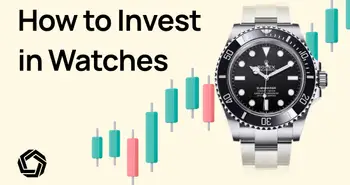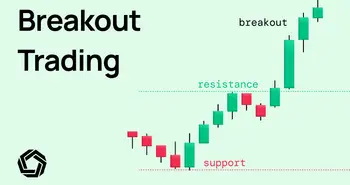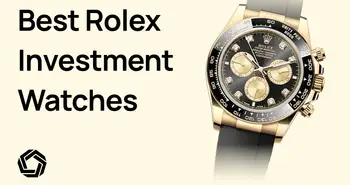Article Contents
Why Are Watches So Expensive

The watch industry has traversed the realms of time, engraving itself deeply in our cultural consciousness. From the pocket watches carried by gentlemen of yore to the wristwatches embraced by the working class, these timepieces have long been symbols of practicality and style. Their significance extends beyond mere utility, often signifying one's social standing, aspirations, and sense of refinement. However, the horological landscape has transformed in recent years, breathing new life and clientele into an ancient craft. Watches have surged to unprecedented price heights, and a wave of reselling and investment has swept through the industry.
“They’re much younger, they’re buying and selling watches much more often, and they care about pre-owned.”
Ben Clymer, founder of Hodinkee
This article aims to dissect the enigma that shrouds these expensive timekeeping devices, shedding light on the factors contributing to their lofty price tags. So, keep reading to find out why watches are so expensive.
The Enigma of Watch Pricing
The enigma of watch pricing is a puzzle that defies simple comprehension. While one might assume that determining the price of a watch is a straightforward matter, the reality is far more intricate. The watch market operates symbiotically with the secondary market, where prices are shaped by many factors. It begins with the watch manufacturer setting a retail price, but the secondary market ultimately establishes its own prices, influenced by demand, scarcity, and various other variables.
To illustrate the perplexing nature of watch pricing, let us consider the collaboration between Omega and Swatch. The MoonSwatch, a plastic rendition of the esteemed Omega Speedmaster, bears a retail price of $260. However, due to overwhelming demand and limited supply, prices skyrocketed by over 250 percent. This peculiar phenomenon led to the 11 versions of the watch being traded on platforms such as StockX and Chrono24 for prices ranging from $320 to $4,442. Astonishingly, the success of the plastic MoonSwatch also spurred a surge in the price of the original Omega Speedmaster Moonwatch. The intricacies of desirability and scarcity intertwine, weaving a complex tapestry determining watch prices.
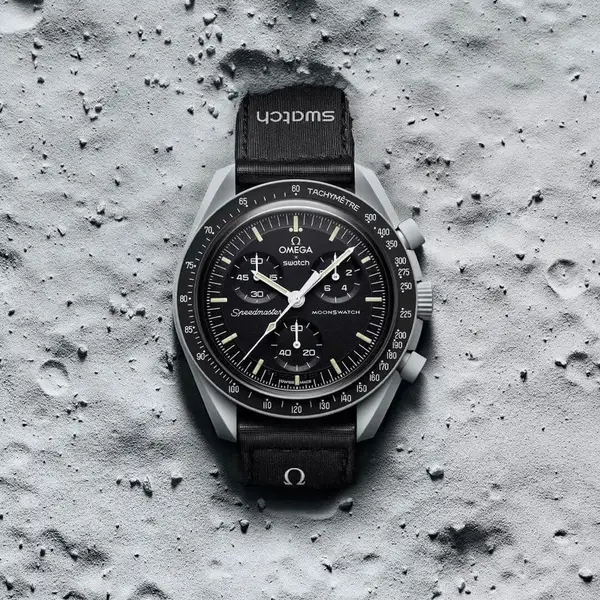
Collaborations manifest in diverse ways across the watch industry. While Swatch produced millions of affordable plastic watches, other brands like Andersen Genève take a different approach. They join forces with artists such as BCHH or Konstantin Chaykin to craft limited editions of exquisite timepieces. These horological masterpieces, driven by both scarcity and quality, command prices in the hundreds of thousands of dollars.

We must acknowledge that understanding why certain watches carry hefty price tags requires more than superficial analysis. Rather than claiming to possess all the answers, we will endeavour to provide you with an overview of intriguing examples from various watch companies, highlighting their quality, craftsmanship, and distinctive models. Ultimately, the power to unravel the mystery and comprehend the reasons behind exorbitant watch prices rests in your hands. Just remember, as we navigate this realm of enigma, never trust a man who wears his watch on the wrong wrist.
Understanding the Markup: Brand Prestige and Market Demand
Exploring the Role of Perceived Value and Exclusivity
Brand prestige is the formidable driving force behind the allure of luxury goods, especially within the realm of watches, and it is intricately intertwined with market demand. The notion of limited supply and the allure of owning a rare and distinctive timepiece entices individuals to willingly pay a premium price.
Rolex, one of the most prominent examples of brand prestige, has mastered maintaining an air of exclusivity. Interestingly, the exact production numbers of Rolex watches remain undisclosed to this day, leaving the public to speculate about the annual output. While other watch brands provide some transparency regarding their annual output, Rolex keeps this information closely guarded, leaving enthusiasts and analysts to speculate on the true quantity produced each year.
Even among non-limited edition models, renowned watchmakers purposefully maintain low production volumes to enhance the allure of their creations. Patek Philippe, for instance, produces a modest 60,000 watches each year, while Audemars Piguet crafts 40,000 and A. Lange & Söhne a mere 5,000. Independent watchmakers such as F.P. Journe, De Bethune, and Grönefeld operate with even more limited production volumes. For instance, F.P. Journe meticulously crafts a mere 900 watches annually, while De Bethune and Grönefeld produce 160 and 60 watches, respectively. This combination of exclusivity and meticulous craftsmanship further heightens the investment appeal of these timepieces.
The extreme practices of luxury conglomerates exemplify the significance of maintaining brand prestige and scarcity. In response to a crackdown on corruption in China, which included scrutinizing the ownership of luxury goods used as bribes, a flood of discounted Cartier and Montblanc watches hit the market. Swiftly realizing the potential damage to their image and pricing power, parent company Richemont took decisive action. Over a span of two years, Richemont intentionally destroyed nearly half a billion dollars worth of designer timepieces. This proactive approach aimed to prevent unsold stock from infiltrating the “grey market” of unauthorized resellers, thus safeguarding their brands' exclusivity and perceived value.
Responding to market demand and pricing accordingly
Luxury Swiss watch manufacturers face challenges meeting market demand, leading to a more selective distribution of their timepieces. Traditionally, authorized dealers (ADs) play a crucial role by maintaining relationships with clients on behalf of the brands.
These dealers receive models based on their sales history, with larger dealers in high-demand areas often receiving more exclusive and desirable models. The sale of these watches is at the discretion of the AD, which also ensures that clients align with the brand values. ADs have implemented waiting lists to cope with demand, making it increasingly difficult for new collectors to obtain sought-after models.
The Emergence of the Secondary “Gray” Market, Speculators and Dealers
The scarcity of new watches in the primary market has led to the flourishing of the secondary market for luxury timepieces. As aspiring collectors face challenges securing their desired models through authorized dealers, they turn to the pre-owned watch market. However, the convenience of obtaining a watch promptly comes at a significant premium. Selling watches in the secondary market is often viewed as a betrayal of brand values by watch brands and ADs. They seek to control the image and exclusivity of their products, and selling allocated watches in the secondary market may result in repercussions for the client. These conditions have driven up prices in the secondary market, with select models trading multiple times their retail price.
Now, let me share perhaps the most mind-boggling example—the Patek Philippe Nautilus. Even the classic models, with a retail price of around $30,000 from authorized dealers, demanded an excruciating waitlist of 8+ years and were later sold for over $100,000 on the secondary market.
However, that's not the jaw-dropping part. Brace yourself for this: a special Tiffany version of the Nautilus was unleashed upon the world. Essentially, it was the same watch with a mere change in colour and the added allure of the Tiffany brand. It got listed for $52,635, and a scanty total of just 170 pieces were brought to life. Out of those, a privileged group of 169 individuals received exclusive invitations to own this coveted timepiece. The remaining piece was sent to an auction where the winning bid defied all reason, skyrocketing to $6,503,500. Unquestionably, this instance epitomizes the absurdity and awe-inspiring nature of the luxury watch market.
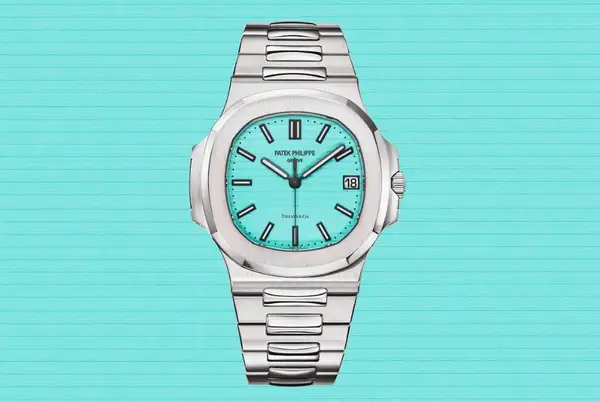
So, the demand for luxury watches in the secondary market has given rise to traders who act as speculators, closely monitoring manufacturers for production numbers and new variations. Secondary market dealers, once viewed as pawn shops, now play a significant role in price discovery. They better understand watch allocations and can estimate supplies of specific models across different regions. Additionally, they provide a secure platform for flippers who wish to minimize the risk of being identified when selling internationally.
Overhead Costs: Materials, Production, and Innovation according to Rolex Standards
When it comes to watchmaking, the use of high-quality materials is crucial. These timepieces often hedge against inflation, and their value remains intact even during times of uncertainty, such as wars.
Rolex, a renowned watch brand, exemplifies this commitment to excellence. The company spares no expense when it comes to materials and production. They utilize the finest materials in the world, going so far as to build their own foundry to create patented metal alloys and precious metals. With a team of world-class experts in materials engineering, Rolex ensures unmatched quality. They employ three types of gold and their famous 904L stainless steel, known for its aerospace-grade durability. Such dedication to materials is matched by their rigorous quality control. Rolex maintains complete vertical integration, crafting all components in-house to the highest standards. Their watches undergo meticulous testing, including a waterproof test in pressurized tanks and an accuracy assessment through microscopic image alignment. They even invented machines to open and close bracelet clasps rapidly and used proprietary machines to test diamonds and stones for authenticity.
Rolex's commitment to quality extends to pushing the boundaries of innovation. The Deepsea Challenge, with a maximum depth rating of 36,090 feet (11,000 meters), accompanied James Cameron on his expedition to the Mariana Trench, the deepest point in the ocean. Rolex's obsession with quality and innovation culminates in a powerful promise to consumers: a Rolex watch will work perfectly for decades, passed down through generations.
“It doesn’t just tell time. It tells history.”
Rolex

The Art of Watchmaking: Complicated Movements and Hand-Finishing
The ultimate accolade is winning the Grand Prix d'Horlogerie de Genève (GPHG) Awards, and among all brands, independent or not, F.P. Journe stands as the unparalleled benchmark. With an extraordinary record of three GPHG “Aiguille d'Or” awards, F.P. Journe has solidified its position as a master of complicated movements and hand-finishing. Let us delve into the remarkable craftsmanship behind their timepieces based on the opinion of watch enthusiasts discussing the most unique and up-and-coming watch brands.
F.P. Journe watches are meticulously crafted with uncompromising attention to detail. These horological marvels feature intricate complications that showcase the brand's technical prowess. From their renowned tourbillons and chronographs to perpetual calendars and resonance movements, each complication is a testament to F.P. Journe's dedication to pushing the boundaries of traditional watchmaking. Every step of the manufacturing process is meticulously executed, blending innovative techniques with traditional craftsmanship, as written in an article in Christies:
“It is headquartered in a 19th-century former gas-lamp factory in the city’s Plainpalais district, a long, low building flooded with natural light — creating ideal conditions for the business’s 120 craftspeople to machine and assemble each watch’s components by hand.”
The creation of an F.P. Journe watch involves countless hours of meticulous handwork. From the assembly of tiny components to the delicate adjustments of the movement, skilled artisans invest their expertise and passion into each timepiece, creating unique pieces by hand – pun intended (if you clicked on the link). The founder's presence and active involvement in the company are often crucial in preserving the brand's heritage and uncompromising standards. Watchmakers like Maximilian Büsser of MB&F, whose visionary creations won the Grand Prix at GPHG, or De Bethune, celebrated for their exceptional tourbillons, exemplify the importance of having watchmaking expertise at the helm.
In the luxury segment of watchmaking, many timepieces carry a price tag that reaches astonishing heights, often surpassing $100,000. This is primarily due to the extensive handwork and the limited production numbers. Numerous collaborations with talented artists or the direct involvement of founders and small teams further enhance the uniqueness and exclusivity of these horological marvels. Brands like Voutilainen, whose Artistic Crafts Prize at the GPHG solidifies their mastery in creating intricate and aesthetically captivating timepieces, epitomize the fusion of artistry and watchmaking.
Thus, the combination of technical prowess, the dedication of skilled artisans, and collaborations with artists or the founders culminate in watches revered as masterpieces and command the highest levels of admiration and price in the luxury segment.
Marketing Matters: Lifestyle Branding and Competition
While the previous section highlighted the exceptional craftsmanship of niche brands in watchmaking, they still face the formidable task of competing against renowned historical brands that have captivated the masses worldwide. One such brand is Rolex, which ascended the luxury mountain over several decades through remarkable marketing strategies and lifestyle branding.
Rolex's marketing journey began with a groundbreaking stunt when Mercedes Gleitze, famous for being the first person to successfully swim across the English Channel, was approached by Rolex's founder, Wilsdorf. He requested her to wear a Rolex on her next attempt and promoted it as the first waterproof wristwatch. This marked the start of Rolex's sponsorship of the most prominent figures.
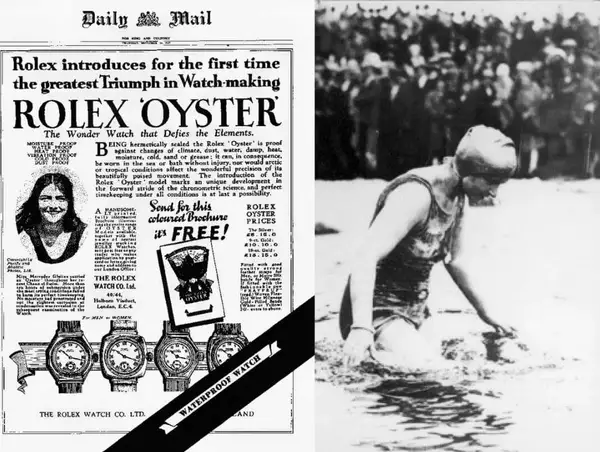
Today, Rolex commands approximately 30% market share in the Swiss luxury watch market, surpassing the combined market share of the next five competitors. With an estimated worth exceeding $100 billion, Rolex is an undisputed industry heavyweight.
However, the competition never sleeps, and over the years, other beautiful watchmakers were able to position themselves formidably against Rolex, creating their own collectors' culture.
Patek Philippe Nautilus: “You never really own a Patek Phillippe”, the 1996 magazine advert read, “You simply look after it for the next generation”, a quote emblematic of the ethos of the Genevan watches brand worn by princes, sheikhs, presidents and the world’s “Who’s Who”. Introduced in 1976, during the challenging era of the “quartz crisis,” the Nautilus became Patek Philippe's first sports watch, departing from its traditional focus on dress watches. This timepiece, named after the iconic submarine in Jules Verne's novel “20,000 Leagues Under the Sea,” not only revitalized the brand but also paid homage to its rich heritage.
Audemars Piguet Royal Oak: It is 1651, King Charles II of England hides in a hallowed tree, narrowly escaping the pursuit of the Roundheads following the Battle of Worcester. After this tree, the Royal Oak, the Royal Navy would name eight of their ships. The year was 1972 when the Royal Oak, designed by Gerald Genta, revolutionized the watch industry. It breathed new life into Audemars Piguet, which was grappling with the influx of accurate and affordable Japanese quartz watches. The Royal Oak's distinctive octagonal design, visible gasket and screws, and a premium price tag of ten times that of a Rolex Submariner startled the watch community. Against all odds, it proved a resounding success, igniting a new era of watch design across the industry.
Richard Mille RM: Established in 2001, Richard Mille is a modern watch brand that draws inspiration from technology, aeronautics, and automobiles. With limited releases and a focus on innovation, Richard Mille quickly garnered attention as a boutique brand catering to the ultra-wealthy. Their watches, known for their lightweight construction, complexity, and association with top athletes, such as Formula 1 drivers and tennis players, captured the imagination of watch enthusiasts. The brand's production is limited to approximately 4,000 watches annually, with retail prices often surpassing $200,000.
Conclusion
Ultimately, the debate will always persist on whether purchasing such timepieces is an unnecessary indulgence or a true mark of luxury. However, one cannot deny the extraordinary craftsmanship and uncompromising quality that define these exquisite creations. By delving into the fascinating realm of watch collecting, one begins to comprehend the allure that captivates so many enthusiasts around the globe. Although we have merely scratched the surface of this hidden world, we hope you now understand why watches command such high prices.
Perhaps this article even sparked your passion for watches, and now you want to be part of this culture or wish to know how to invest in watches. If yes, then Morpher is probably the best place to start. Investing in these watches is not only available for the super-rich anymore. With Morpher, you can invest in an entire collection with as little or as much as you want. Whether your heart yearns for classic brands like Rolex, Patek Philippe and Audemars Piguet or desires a hot newcomer like Richard Mille on Morpher, you can invest in all.
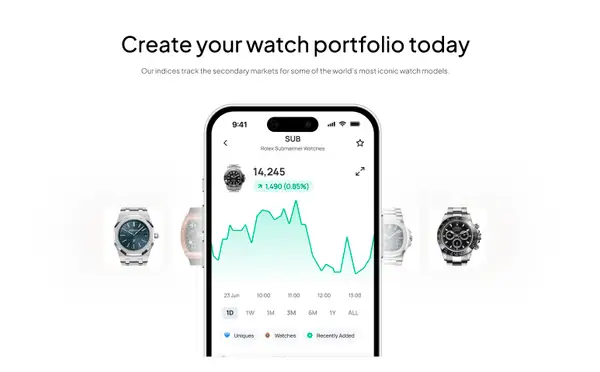

Disclaimer: All investments involve risk, and the past performance of a security, industry, sector, market, financial product, trading strategy, or individual’s trading does not guarantee future results or returns. Investors are fully responsible for any investment decisions they make. Such decisions should be based solely on an evaluation of their financial circumstances, investment objectives, risk tolerance, and liquidity needs. This post does not constitute investment advice.

Painless trading for everyone
Hundreds of markets all in one place - Apple, Bitcoin, Gold, Watches, NFTs, Sneakers and so much more.

Painless trading for everyone
Hundreds of markets all in one place - Apple, Bitcoin, Gold, Watches, NFTs, Sneakers and so much more.



